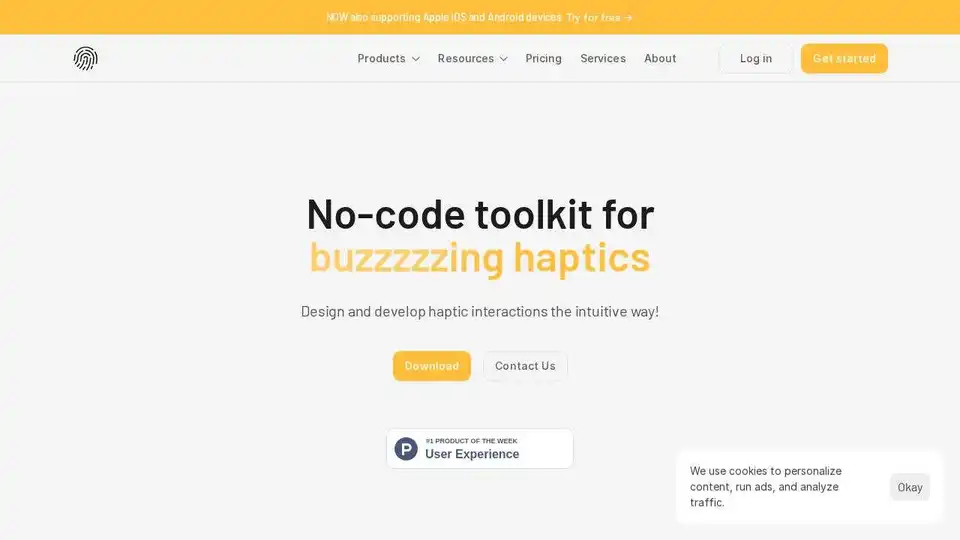
Hapticlabs
Overview of Hapticlabs
Hapticlabs: No-Code Haptics for Immersive Experiences
What is Hapticlabs? Hapticlabs provides a no-code toolkit designed to simplify the creation, prototyping, and deployment of immersive haptic experiences. It caters to designers, developers, researchers, and DIY enthusiasts, enabling them to integrate haptic feedback into their projects without needing to write code.
How does Hapticlabs work? Hapticlabs operates through a combination of software and hardware components, offering a comprehensive ecosystem from design to deployment. Key elements include:
- Hapticlabs Studio: This is the core software that allows users to design tangible interactions by creating custom haptic patterns and signals. It provides an intuitive interface for crafting feedback variations.
- DevKit: A hardware component enabling users to augment any object with haptics. It facilitates real-time evaluation of designs.
- Mobile App: Allows creation of tangible feedback on iOS devices, ensuring compatibility across different platforms.
The process involves prototyping ideas quickly without coding or soldering, evaluating haptic experiences seamlessly across products and environments, and deploying designs on the preferred system.
Key Features and Benefits
- No-Code Design: Create custom haptic interactions without writing a single line of code, saving time and resources.
- Fast Iterations: Designed for rapid prototyping, enabling teams to create tangible interactions in days, not months.
- Cross-Device Compatibility: Build experiences across various devices to provide a seamless brand experience.
- Real-time Evaluation: Evaluate designs in real-time with the DevKit or Mobile App, ensuring effective feedback.
- Versatile Applications: Suitable for product development, education, research, and DIY projects.
Use Cases
- Product Development: Integrate haptic technology into product lines to offer intuitive interactions. Export code is ready for deployment, and the toolkit is compatible with various prototyping tools.
- Educational Purposes: Facilitate hands-on exploration of haptic technology, even without previous expertise.
- Research: Expedite research by eliminating the need for custom software or hardware solutions.
- DIY & Maker Projects: Bring haptic ideas to life by creating prototypes and combining them with sensors and microcontrollers.
Why is Hapticlabs Important?
Hapticlabs addresses the need for intuitive haptic design and development tools. By removing the coding barrier, it opens up haptic technology to a broader audience, enabling more innovative and immersive experiences. Its modular platform allows focus on data collection and easy adaptation to various applications.
User Testimonials
- Mikal Hallstrup, DesignIt: "Hapticlabs will revolutionize the development of upcoming tangible interactions."
- Nesh Gandhe, Microsoft: "A powerful prototyping and design tool that enables rapid deployment of haptic experiences! Easy to use hardware + intuitive software suite saved us weeks of development time."
- Glyn Griffiths, Designpartners: "It’s immensely helpful during the prototyping process, especially in the first stage."
- Thomas Kail, Betterup: "I love it - it's easily the best thing on the market"
- Antonio Krämer Fernandez, Intuity Media Lab: "To create innovative products including haptic feedback, we need a toolkit just like this."
- Mohit Singhala, University of Pittsburgh: "The software interface is extremely intuitive. It took me less than ten minutes from opening the box to already having full control over the three actuators."
Getting Started
Those interested in trying Hapticlabs can explore the resources provided, including the Knowledge Base, Design Principles, and Documentation. A 14-day trial is available for no-code haptic design, allowing users to explore tangible interactions.
Conclusion
Hapticlabs provides an accessible and powerful solution for incorporating haptic feedback into various applications. Its no-code toolkit, combined with hardware components, enables rapid prototyping, cross-device compatibility, and real-time evaluation, making it a valuable tool for designers, developers, researchers, and DIY enthusiasts looking to create immersive and intuitive experiences.
Best way to integrate touch into digital experiences? Hapticlabs's no-code approach lets you focus on design, not coding, accelerating development and fostering innovation. What is the impact of touch? Engage users on a deeper level by utilizing Hapticlabs for advanced haptic solutions in product development, education, research, and DIY projects.
Best Alternative Tools to "Hapticlabs"
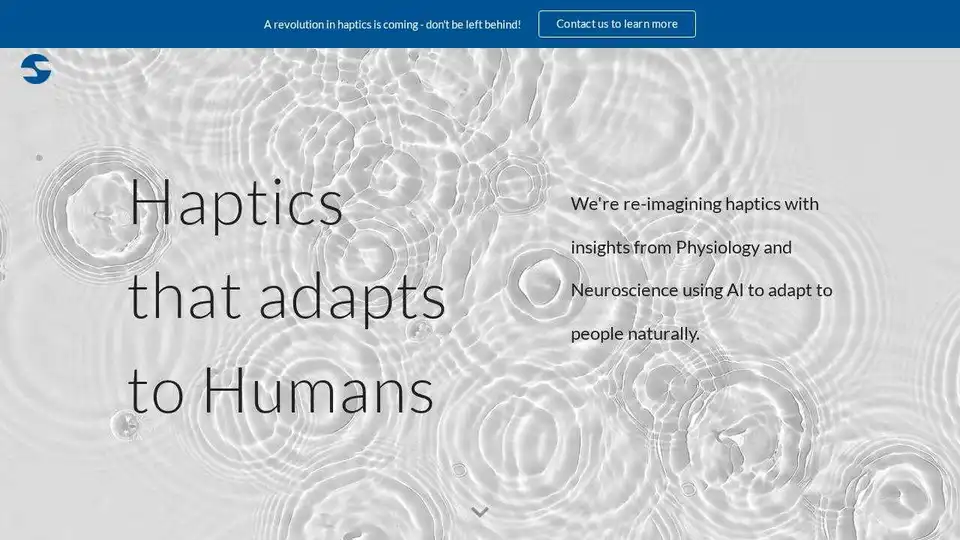
Discover AI-powered haptic technology that adapts to humans using biometric monitoring and personalized touch stimulation. Experience a new era of personalized haptics!

Lucidly is an AI-powered lucid dreaming app that uses Apple Watch to detect REM sleep and notify users, supporting various lucid dreaming techniques.

Neuron AI Pro is a private & secure AI chat and productivity tool optimized for Apple Silicon. Enjoy on-device AI processing for secure audio summarization and more.
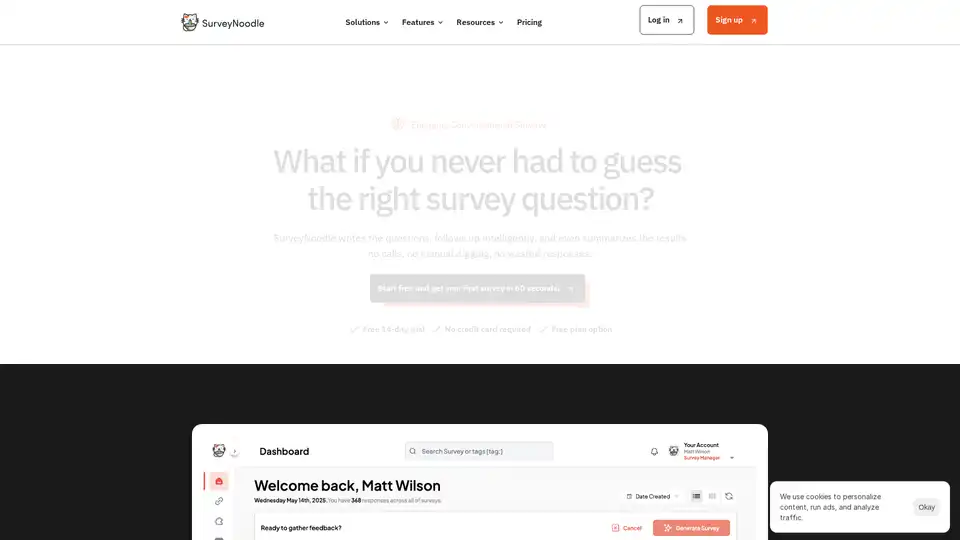
SurveyNoodle is an AI-powered platform that simplifies survey creation with conversational surveys and insight-rich feedback. It automates question writing, intelligent follow-ups, and result summarization.
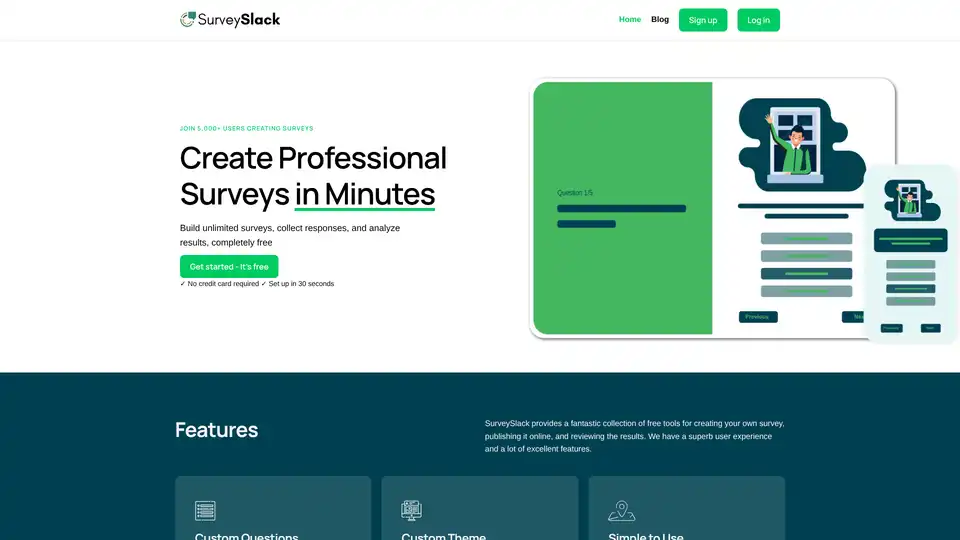
SurveySlack is a free online survey maker that allows you to create unlimited surveys, collect responses, and analyze results. It offers custom questions, themes, branding, and conditional survey logic.
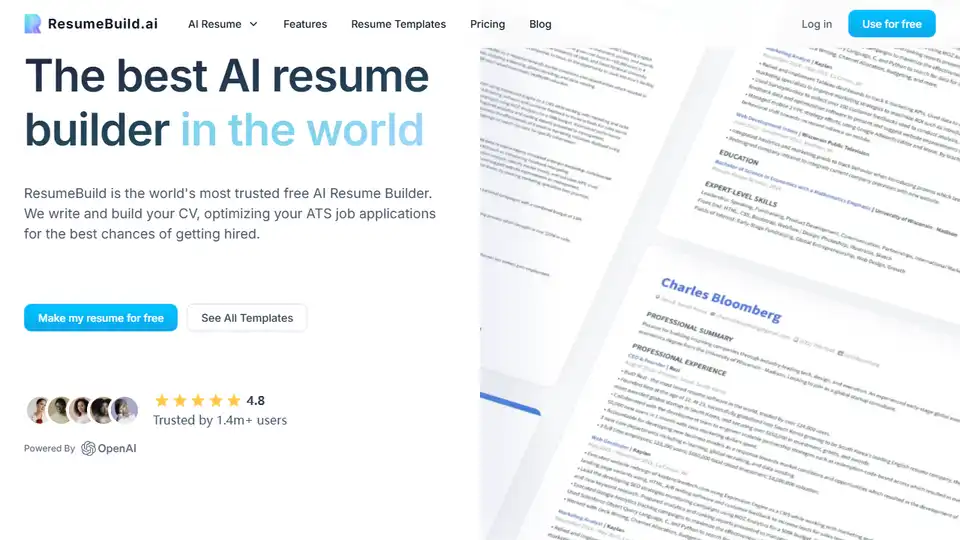
ResumeBuild is an AI resume builder trusted by 1.4M+ users. Create ATS-optimized resumes, cover letters, and more with AI. Start your job search today!
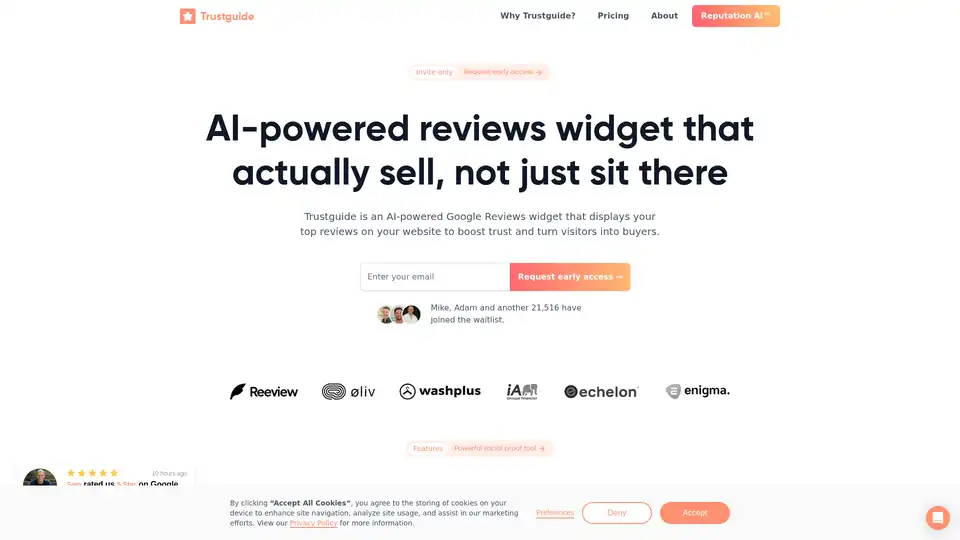
Trustguide is an AI-powered Google Reviews widget that displays top reviews on your website to boost trust and convert visitors into buyers. Easy to install and fully customizable.
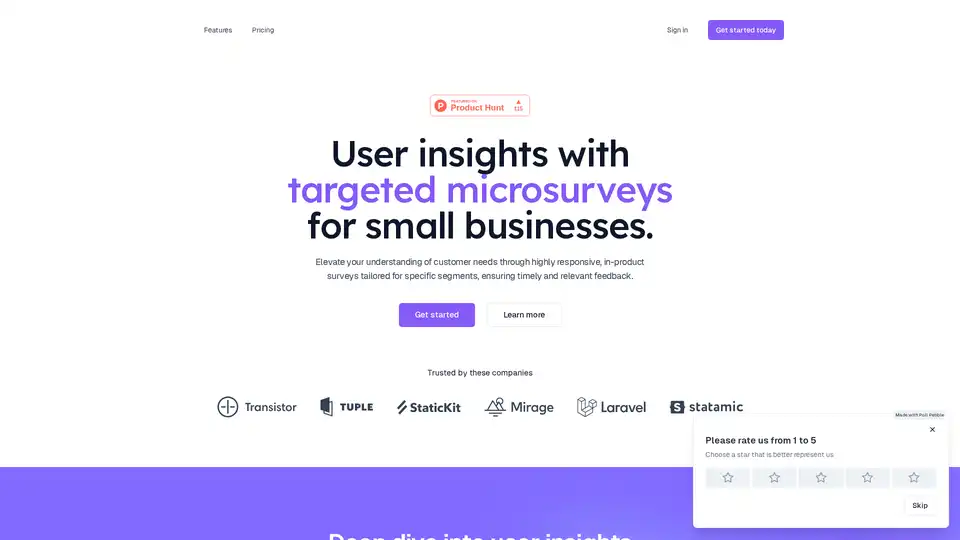
PollPebble offers targeted microsurveys for user insights. AI-powered sentiment analysis helps gauge customer emotions. Free plan available. Get started today!
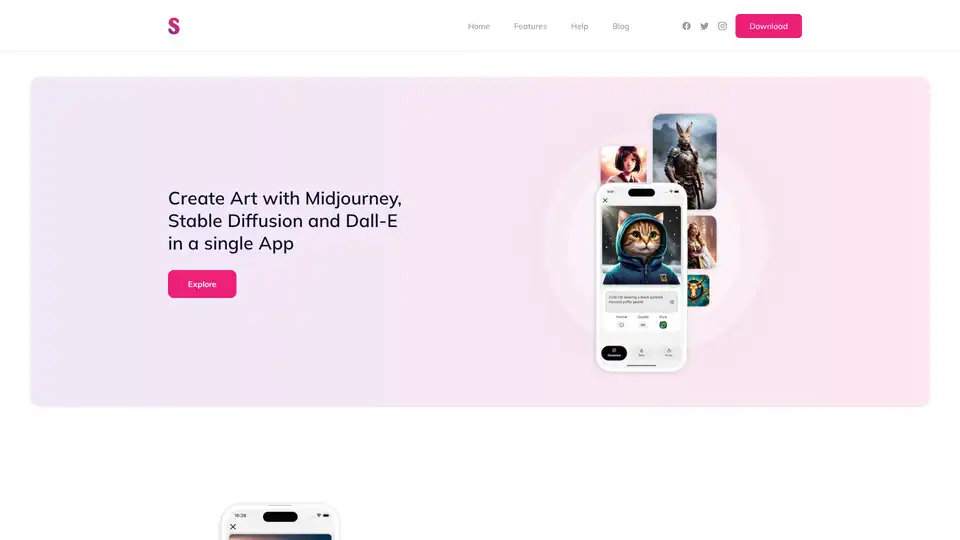
Splend AI is an app that lets you create art using AI models like Midjourney, Stable Diffusion, and Dall-E. Generate portraits, artwork, and landscapes from simple descriptions and share your creations with the community.
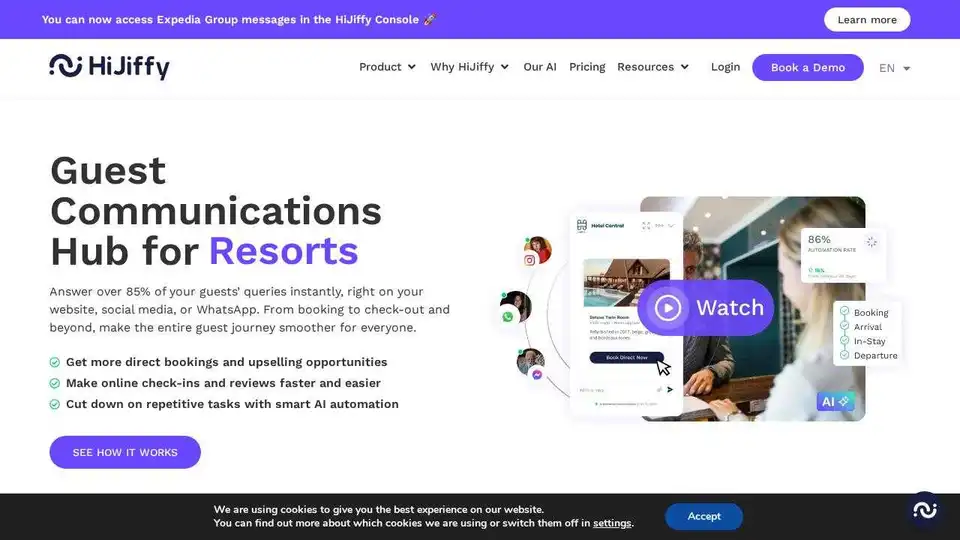
HiJiffy is an AI-powered guest communications hub for hotels, resorts, and hostels. It automates guest communication, increases direct bookings, and improves the guest experience from booking to check-out.
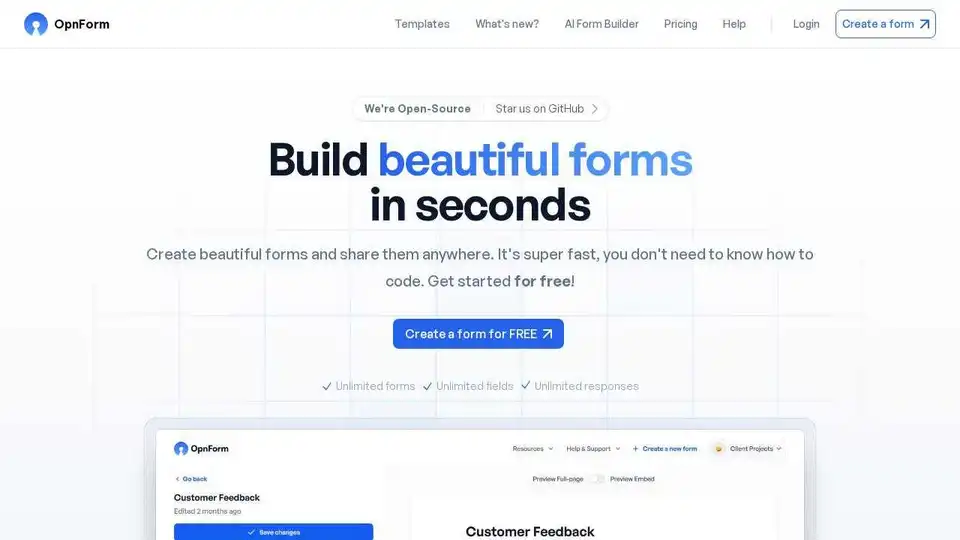
OpnForm is a free, open-source AI-powered form builder with unlimited submissions and rich features. Easily create and share forms anywhere without coding.

Quiz Maker is an AI-powered platform to create customized quizzes, personality tests, and surveys in minutes. It offers auto-grading, lead capture, and integration with learning management systems. Start for free!
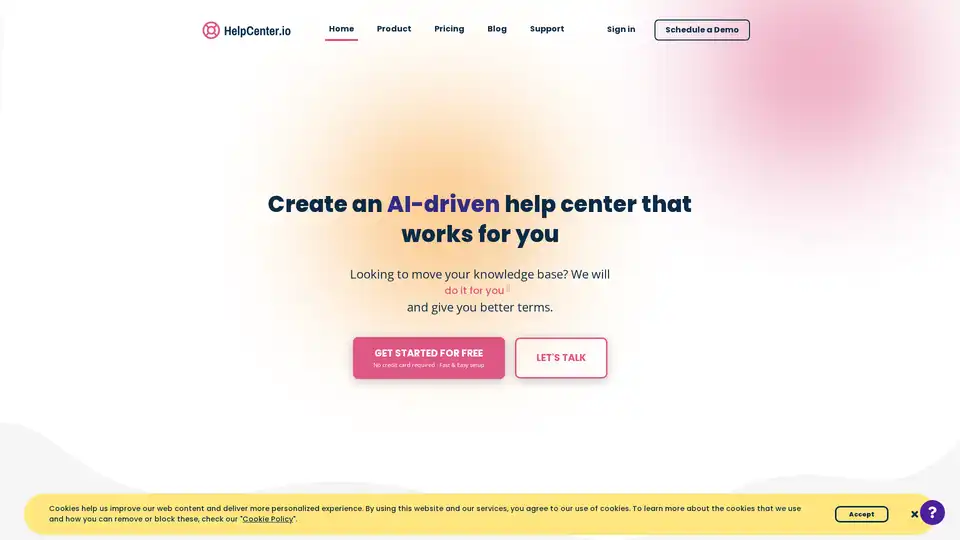
HelpCenter.io helps you create an AI-driven help center to empower customers, reduce support costs, and build an internal knowledge base. Features include a beautiful article editor, smart AI widget, and dynamic FAQ sections.

EmbedAI allows users to create custom AI chatbots powered by ChatGPT using their data. Train on files, websites, and YouTube, customize the look and feel, and integrate easily with other apps.
